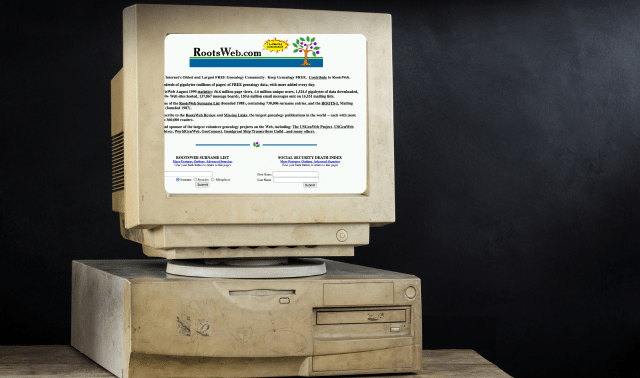Did your ancestors immigrate to the United States between 1846 and 1851? Do you have Japanese ancestry? Was anyone in your family held as a prisoner of war during World War II or the Korean War? Did your relatives help build the Panama Canal? These questions may sound unrelated, but if you can answer yes to any one of them, you might find valuable family history clues in the National Archives and Records Administration’s (NARA) <www.archives.gov> latest online offering: the Access to Archival Databases (AAD) system. Through 350 databases, AAD provides access to nearly 50 million records created by more than 20 federal agencies.
Among AAD’s 350 databases are several data files of special interest to genealogists. Go to the AAD Web site <www.archives.gov/aad>, click the Search button, and then click on People to access resources dealing with immigrants, Japanese-American internees, prisoners of war, wartime casualties and Panama Canal Zone deaths. Here’s a look at 10 of those files and the clues they hold:
• Combat Area Casualties Database names 58,965 US military officers and soldiers who died or who were missing in action or prisoners of war in Southeast Asia from 1956 to 1998.
• Data File from the Casualty Information System provides information on 293,858 members of the US Army and their dependents who were killed, injured or missing in action anywhere in the world from 1961 to 1981. About 85 percent of the records relate to the Vietnam War, 1961 to 1975.
• Famine Irish Data Files names 604,596 people who came to the United States by ship between 1846 and 1851. About 70 percent were Irish natives escaping the potato famine. Others came from Canada, Brazil, St. Croix, Russia, Morocco and other countries. Some were Americans returning to the United States from trips abroad. Ancestry.com has a fee-based version of this database, Irish Immigrants: New York Port Arrival Records, 1846-1851.
• Index to the Corgas Hospital Mortuary Death Records names 26,213 US military soldiers and officers, employees of the Panama Canal Commission, and Canal Zone civilians who died between 1906 and 1991.
• Japanese-American Internee File provides information on 109,384 Japanese-Americans evacuated from California, Oregon and Washington and relocated to 10 internment camps during World War II.
• Korean Conflict Casualty File names 33,642 American military officers and soldiers who died between 1950 and 1957, either on the battlefield or while missing in action.
• Korean War Casualty File names US Army casualties, including 27,727 officers and soldiers who died and 82,248 who were wounded between 1950 and 1953.
• Korean War File of American Prisoners of War contains records for 4,714 US POWs killed or wounded.
• Repatriated Korean Conflict Prisoners of War File has information on about 4,447 former POWs between 1950 and 1954.
• World War II Prisoners of War File has 143,374 records covering American military officers and soldiers, as well as some Allied civilians.
Don’t be confused by the date ranges following the database titles on the NARA Web site. For example, the years in the title Famine Irish Data Files, 1977?-1989? indicate when the electronic file was created or maintained, not the time period covered by the data (to find that, you’ll need to look for the coverage dates).
The National Archives Web site can be difficult to navigate, but don’t let that discourage you; the benefits of this new genealogical resource are too great. For example, if your relative is listed in the Combat Area Casualties Current File, you’ll find his full name, dates of birth and death, hometown, military grade, type of casualty, religion and other information.
If you lose your way, click on the Help tab, at the top right-hand side of each page, for a description of the site’s organization and search tips. Click on AAD Terminology, at the top left-hand side of each page, for explanations of confusing terms such as inclusive dates and coverage dates.
As you navigate the National Archives and Records Administration’s Web site, you may feel like a mouse making its way through a maze. But with these navigational tips, you should find the cheese in no time.
From the October 2003 issue of Family Tree Magazine





